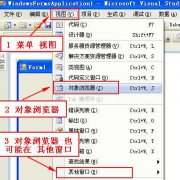Otto Product Classification Winners Interview: 2nd place, Al
标签:
Otto Product Classification Winner‘s Interview: 2nd place, Alexander Guschin ¯\_(ツ)_/¯The Otto Group Product Classification Challenge made Kaggle history as our most popular competition ever. Alexander Guschin finished in 2nd place ahead of 3,845 other data scientists. In this blog, Alexander shares his stacking centered approach and explains why you should never underestimate the nearest neighbours algorithm.
3,848 players on 3,514 teams competed to classify items across Otto Group‘s product lines
The Basics What was your background prior to entering this challenge?I have some theoretical understanding of machine learning thanks to my base institute (Moscow Institute of Physics and Technology) and our professor Konstantin Vorontsov, one of the top Russian machine learning specialists. As for my acquaintance with practical problems, another great Russian data scientist who once was Top-1 on Kaggle,Alexander D’yakonov, used to teach a course on practical machine learning every autumn which gave me very good basis. Kagglers may know this course as PZAD.
Alexander‘s profile on Kaggle
How did you get started competing on Kaggle?I got started in 2014’s autumn in “Forest Cover Type Prediction”. At that time I had no experience in solving machine learning problems. I found excellent benchmarks in “Titanic: Machine Learning from Disaster” which helped me a lot. After that I understand that machine learning is extremely interesting for me and just tried to participate in every competition I could.
What made you decide to enter this competition?I wanted to check some ideas for my bachelor work. I liked that Otto competition has quite reliable dataset. You can check everything on cross-validation and changes on CV were close enough to leaderboard. Also, the spirit of competition is quite appropriate for checking ideas.
Let‘s Get Technical What preprocessing and supervised learning methods did you use?
My solution’s stacking schema
The main idea of my solution is stacking. Stacking helps you to combine different methods’ predictions of Y (or labels when it comes to multiclass problems) as “metafeatures”. Basically, to obtain metafeature for train, you split your data into K folds, training K models on K-1 parts while making prediction for 1 part that was left aside for each K-1 group. To obtain metafeature for test, you can average predictions from these K models or make single prediction based on all train data. After that you train metaclassifier on features & metafeatures and average predictions if you have several metaclassifiers.
In the beginning of working on the competition I found useful to split data in two groups : (1) train & test, (2) TF-IDF(train) & TF-IDF(test). Many parts of my solution use these two groups in parallel.
Talking about supervised methods, I’ve found that Xgboost and neural networks both give good results on data. Thus I decided to use them as metaclassifiers in my ensemble.
Nevertheless, KNN usually gives predictions that are very different from decision trees or neural networks, so I include them on the first level of ensemble as metafeatures. Random forest and xgboost also happened to be useful as metafeatures.
What was your most important insight into the data?Probably the main insight was that KNN is capable of making very good metafeatures. Never underestimate nearest neighbours algorithm.
Very important were to combine NN and XGB predictions on the second level. While my final second- level NN and XGB separately scored around .391 on private LB, the combination of them achieved .386, which is very significant improvement. Bagging on the second level helped a lot too.
TSNE in 2 dimensions
Beside this, TSNE in 2 dimensions looks very interesting. We can see on the plot that we have some examples which most likely will be misclassified by our algorithm. It does mean that it won’t be easy to find a way to post-process our predictions to improve logloss.
Also, it seemed interesting that some classes were related closer than others, for example class 1 and class 2. It’s worth trying to distinguish these classes specially.
Final model’s predictions for holdout’
Were you surprised by any of your findings?温馨提示: 本文由Jm博客推荐,转载请保留链接: https://www.jmwww.net/file/70967.html



